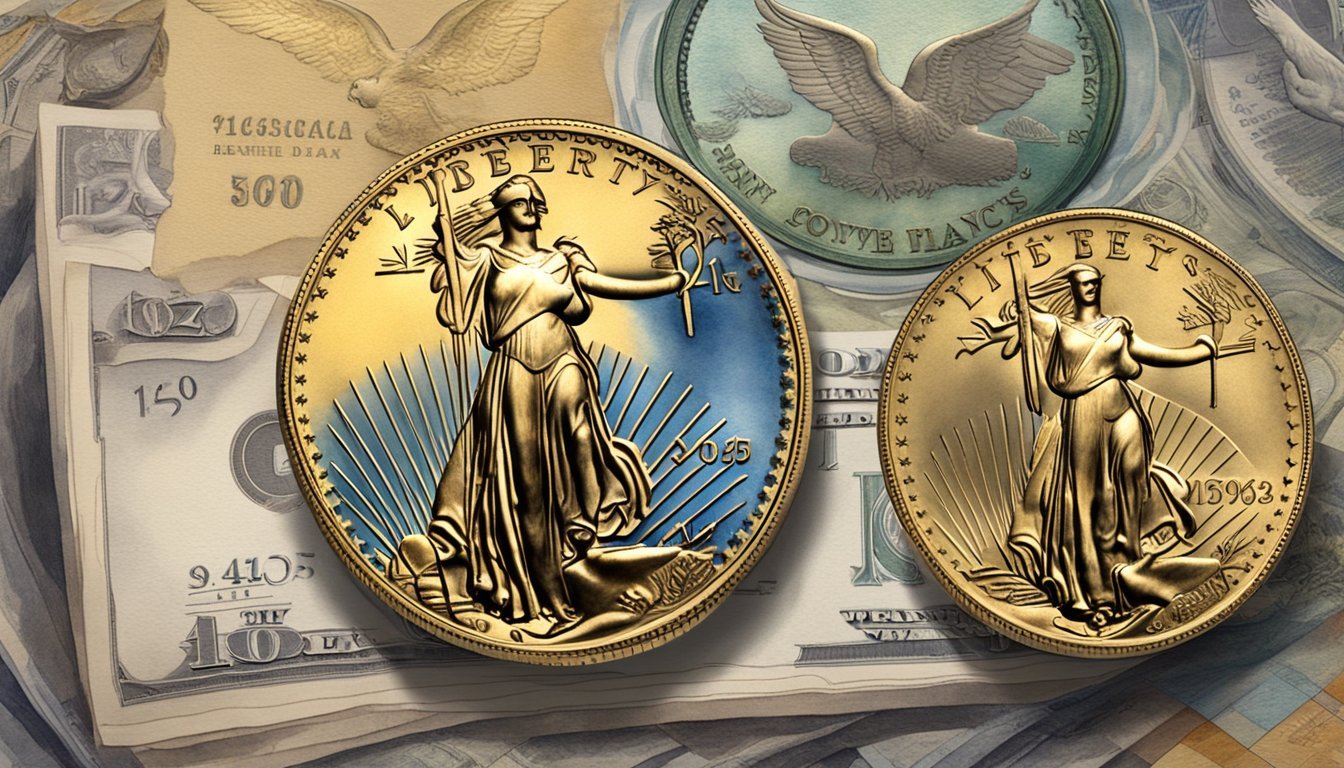History and Significance of the 1933 Double Eagle
The 1933 Double Eagle coin captivates collectors due to its storied past and the interplay of its rarity with U.S. history during the Great Depression.
Creation and Mintage
The last gold coin struck for circulation in the United States was the 1933 Double Eagle, designed by the renowned sculptor Augustus Saint-Gaudens at the behest of President Theodore Roosevelt. The coin featured Lady Liberty striding forward on one side and a flying eagle on the other. The U.S. Mint in Philadelphia produced 445,500 pieces of this $20 gold coin during its final year of mintage.
The Great Depression and Executive Order 6102
During the Great Depression, in a bid to stabilize the economy and abolish the gold standard, President Franklin Delano Roosevelt signed Executive Order 6102, which prohibited the private ownership of gold and required citizens to exchange their gold coins for paper currency. Consequently, the 1933 Double Eagles, although minted, were never legally circulated and were ordered to be melted down, except for two that were sent to the Smithsonian Institution for posterity.
Legal Battles and Ownership
Over the years, a few of the supposed destroyed 1933 Double Eagles surfaced in the hands of collectors, leading to numerous legal battles regarding their ownership. The most famous coin belonged to King Farouk of Egypt who had legally obtained it before the export ban. Its later discovery in 1996 led to a high-profile legal case between the U.S. government and a private owner which was settled in court, allowing one of the coins to be auctioned. The coin’s rarity and the controversy surrounding its legal status have only augmented its value and allure to collectors worldwide.
Market Value and Collectibility

The 1933 Double Eagle is not only a numismatic legend but also a gold coin that achieves remarkable figures at auction due to its rarity and allure among collectors.
The Rarity of the Coin
The 1933 Saint-Gaudens Double Eagle holds a special status among rare coins due to its extremely limited legal availability. In 1933, during a changing landscape in U.S. currency and banking policy, most of the newly minted coins were not released into circulation and were instead melted down, leaving very few in existence. This gold coin is now synonymous with rarity in the American numismatic sphere.
Record Prices at Auction
The peak value of the 1933 Double Eagle was solidified in a record-breaking sale at Sotheby’s for a staggering $18. 87 million, making it the most valuable coin in the world. The coin, once part of the collection of the famed shoe designer Stuart Weitzman, surpassed pre-auction estimates by a considerable margin, showcasing its desirability among high-end collectors and investors in collectible coins. Its unparalleled value is a testament to the rarity and historical significance that drive the numismatic market. While some collectors may wonder, are beanie babies worth anything in comparison, the demand for rare coins like the 1933 Double Eagle far surpasses that of most other collectibles. This record-breaking sale highlights how historical artifacts with unique provenance continue to captivate passionate investors worldwide.
Factors Influencing Value
Several factors contribute to the valuation of a Double Eagle, with rarity at the forefront. However, the coin’s condition, encapsulated by an MS65 grading by PCGS, plays a significant role; the higher the grade, the more pristine the coin, influencing its market valuation. Other factors include the historical significance, the demand for gold coins, specifically American coins with rich heritage, and the robustness of the numismatic market. Authentication and grading by prominent organizations like PCGS and NGC ensure that collectors can invest with confidence in the authenticity of numismatic treasures like the 1933 Double Eagle.

